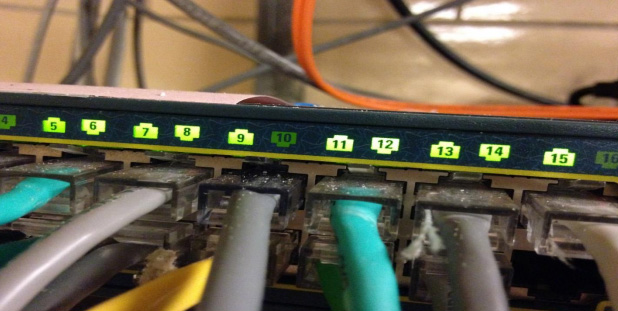Prison inmates built custom PCs and hid them in the ceiling
You can't make this stuff up.

In what could easily be confused as an episode of Prison Break, two inmates at the Marion Correctional Institution in Ohio, Adam Johnston and Scott Spriggs, are in hot water for piecing together a pair of PCs and hiding them in the ceiling of a training room closet, and then patching them into the prison's network.
The prisoners were originally tasked with dismantling old computers for the purpose of recycling old parts. What they did instead was take "two computers that should have been disassembled, placed hard drives into the computers, installed a network card, transported the computers across the institution for approximately 1,100 feet" and hid them, according to a report (PDF) by the Ohio Inspector General. They also ran wire, cable, and power cords.
Using stolen login credentials from one of the guards, the inmates were able to infiltrate the prison's network. While connected, they committed a few cybercrimes, including credit card fraud and identity theft. Had this gone on longer before being detected, one of the inmates would have also committed tax fraud by filing false tax forms and having the refunds wired to debit cards.

The inmates' undoing was not paying better attention to when they logged on, and using the systems too much and too often. IT workers noticed that one of the machines on the network was exceeding the daily Internet usage threshold. When they investigated the logs, they discovered that a guard's login credentials were being used on days when he wasn't working. That prompted a wider investigation in which they were able to trace where the connection was coming from.
"It surprised me that the inmates had the ability to not only connect these computers to the state's network but had the ability to build these computers," Meyer told ABC 6, according to PCMag. "They were able to travel through the institution more than 1,100 feet without being checked by security through several check points, and not a single correction's staff member stopped them from transporting these computers into the administrative portion of the building."
There were five inmates involved. In addition to committing identity theft and attempting tax fraud, some of the culprits used the PCs to watch porn, surf through Tor sites, chat on Pidgin, and look up articles about making homemade drugs, plastics, and explosives.
No word on whether or not they had Core i7 CPUs or high-end GTX 1080 Ti cards.
Keep up to date with the most important stories and the best deals, as picked by the PC Gamer team.
Paul has been playing PC games and raking his knuckles on computer hardware since the Commodore 64. He does not have any tattoos, but thinks it would be cool to get one that reads LOAD"*",8,1. In his off time, he rides motorcycles and wrestles alligators (only one of those is true).


